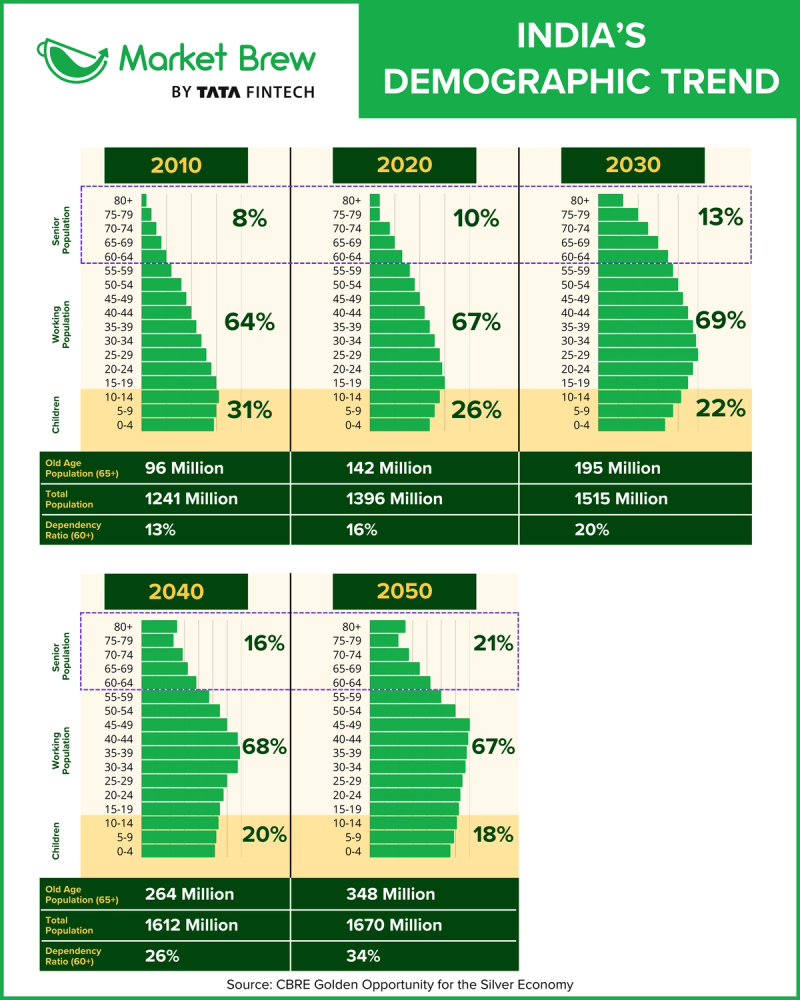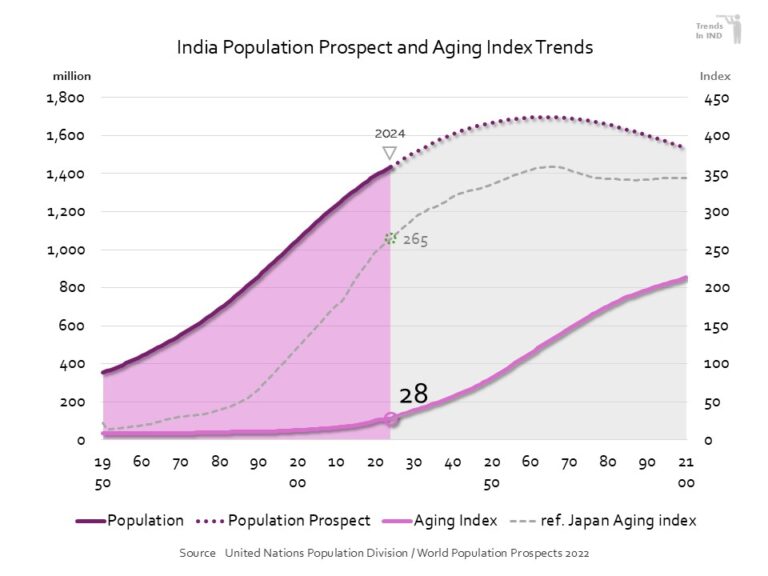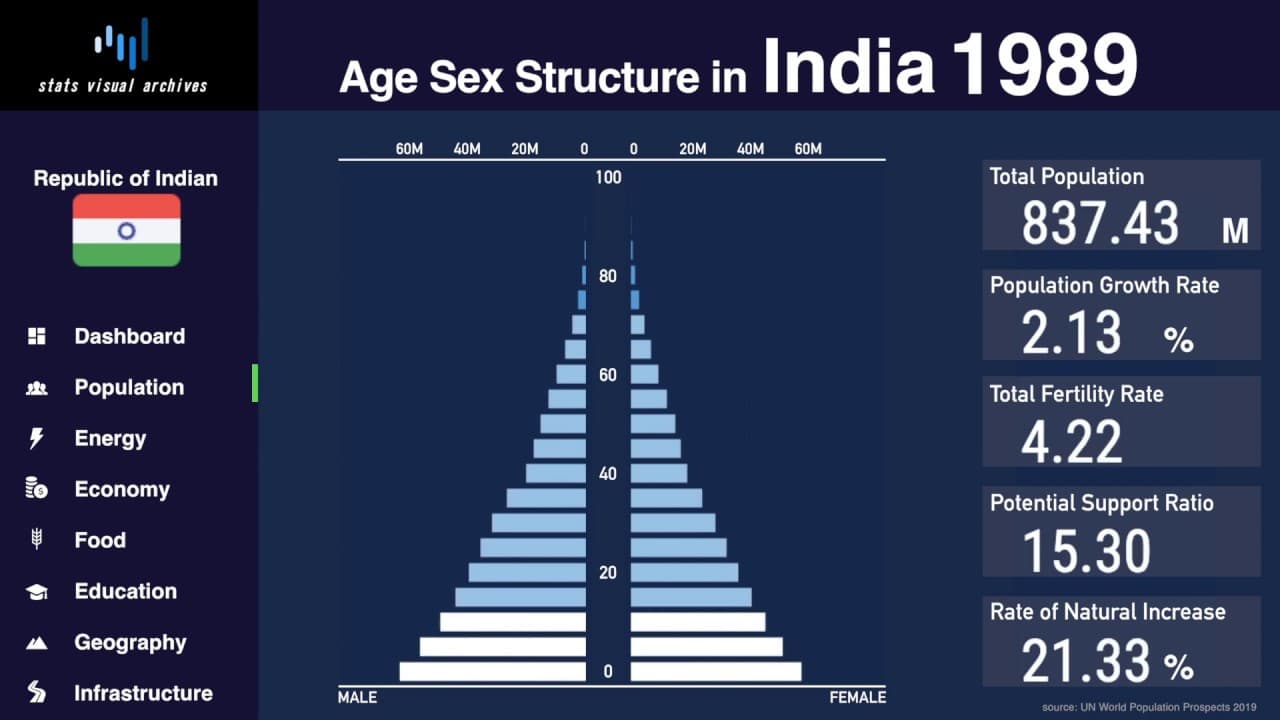India"s Aging Population Surges: 21% Over 60 By 2050—Are We Prepared?
India, long celebrated for its youthful demographic, is on the verge of a significant demographic shift that could reshape its social and economic landscape. With over 65% of its population currently below the age of 35, the nation has enjoyed a demographic dividend that has fueled its economic growth. However, this trend is rapidly changing. By 2050, it is projected that 21% of India"s population will be over the age of 60, translating to approximately 38 crore individuals. This figure alone will surpass the current population of the United States, marking a pivotal moment in India"s demographic journey.
Background & Context
Historically, India"s youth population has been viewed as a significant asset, providing a robust workforce that has driven economic expansion for decades. However, the country is now confronted with the reality of an aging population. Currently, around 10.5% of the population, or about 15 crore people, are over 60 years old. This demographic shift raises pressing questions regarding the preparedness of India’s infrastructure, healthcare, and social services to accommodate a growing elderly population.
According to a report by CBRE, India is expected to account for 17% of the world"s senior citizens by 2050. This drastic increase poses challenges not only for healthcare systems but also for employment, social engagement, and the overall quality of life for the elderly. As previously reported on similar situations globally, nations face a myriad of issues when transitioning to an aging society, including the sustainability of pensions and the availability of senior living communities.
Key Developments
The implications of an aging population are manifold. With the elderly demographic set to increase significantly, questions arise about the adequacy of current healthcare facilities and social support systems. Experts argue that India must bolster its healthcare infrastructure, ensuring that it is equipped to handle the unique needs of older citizens, including chronic disease management and geriatric care.
Moreover, there are discussions about raising the retirement age in both the government and private sectors. This potential policy change could create more job opportunities for older citizens, fostering a sense of purpose and financial independence. However, this initiative must be accompanied by comprehensive training programs to ensure that older workers are equipped with relevant skills in an ever-evolving job market.
\n\n
Image for India"s Aging Population Surges: 21% Over 60 By 2050—Are We Prepared?
Broader Impact
The aging population will also necessitate a cultural shift in how society views and interacts with its elderly members. Current social clubs and community activities are often geared towards younger demographics, leaving older adults with limited options for engagement. The need for more senior living communities and social initiatives that promote interaction among different age groups is becoming increasingly urgent.
Additionally, the financial aspect of this demographic transition cannot be ignored. Current pensions and retirement savings schemes may not suffice for the needs of a growing elderly population. Policymakers will need to evaluate and potentially reform pension systems to ensure that they are sustainable and adequate for future retirees. This challenge mirrors the recent developments in other countries grappling with similar demographic shifts, highlighting the global nature of this issue.
What"s Next
As India prepares for this demographic transition, it faces a critical juncture. Policymakers, healthcare providers, and community leaders must collaborate to create a comprehensive strategy that addresses the multifaceted needs of the aging population. This includes enhancing healthcare infrastructure, revising retirement policies, and fostering inclusive community environments where seniors can thrive.
Future developments will likely include extensive public discussions on how to better integrate older individuals into the workforce and society. As India stands on the brink of this demographic transformation, the actions taken today will determine the quality of life for millions of elderly citizens in the years to come. The urgency of these discussions is underscored by the fact that, by 2050, the elderly population in India will be larger than the entire population of many countries, necessitating immediate and thoughtful action.

Image for India"s Aging Population Surges: 21% Over 60 By 2050—Are We Prepared?

![[Video] UPS MD-11 cargo plane crashes after takeoff in Louisville, KY; 7 dead](/_next/image?url=%2Fapi%2Fimage%2Fthumbnails%2Fthumbnail-1762324842867-aeq5sn-thumbnail.jpg&w=3840&q=75)




![[Video] Trump says US lost 'a little bit of sovereignty' in New York](/_next/image?url=%2Fapi%2Fimage%2Fthumbnails%2Fthumbnail-1762374644834-4mb6g4-thumbnail.jpg&w=3840&q=75)

